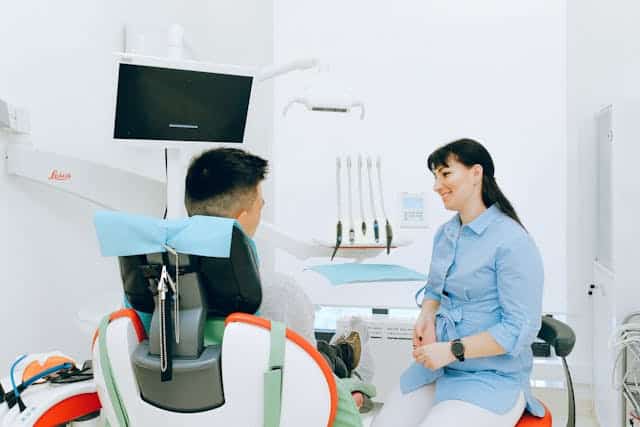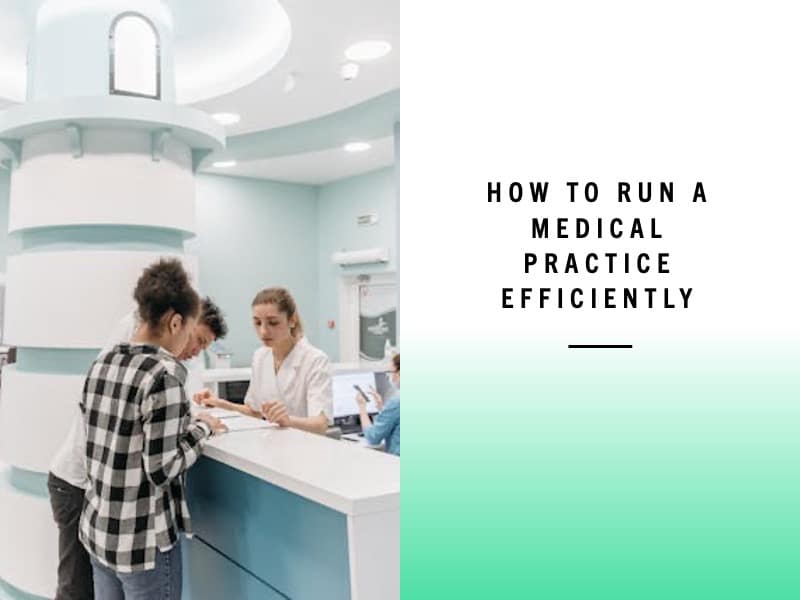How to Run a Medical Practice Efficiently
Successfully running a medical practice requires more than clinical expertise; it demands business acumen, operational strategy, and a patient-centered mindset.
Healthcare professionals are often pulled in multiple directions, juggling patient care with billing, compliance, staffing, and technology.
When systems aren’t optimized, it can lead to burnout, staff turnover, and patient dissatisfaction.
However, with a proactive approach, it’s possible to streamline your operations, reduce inefficiencies, and deliver higher-quality care.
Whether you’re a solo practitioner or manage a multi-provider clinic, the right combination of tools, leadership, and data-driven decision-making can help your practice thrive.
Why Efficiency Matters in Modern Healthcare
Efficient practices don’t just run smoother, they perform better on every level.
From improved patient outcomes to better financial sustainability, optimizing your practice’s workflow has cascading benefits.
It allows providers to focus more on care, patients to feel more supported, and staff to work more collaboratively.
In a competitive and fast-changing healthcare landscape, operational efficiency is no longer a luxury: it’s a necessity.
The Centers for Medicare & Medicaid Services (CMS) have long emphasized the value of coordinated, efficient care as a means to improve health outcomes and reduce costs.
Likewise, research shows that high-functioning clinical workflows significantly reduce medical errors and increase patient safety (Rodziewicz et al., 2024).
Tips for Running a Better Healthcare Practice
There’s no single blueprint for success, but practices that run efficiently share some consistent strategies.
The following tips for running a better healthcare practice combine technological innovation, leadership best practices, and data-backed insights to help you optimize your healthcare practice’s operations.
Implement Technology to Streamline Workflow
One of the most impactful ways to run a medical practice efficiently is by embracing the right technology.
Electronic Health Records (EHRs), telemedicine platforms, automated scheduling systems, and digital intake forms can reduce time-consuming administrative work and prevent costly errors.
For example, you can look into using AI scribe to simplify the workflow. AI medical scribes record patient visits in real time, freeing up providers from manual note-taking and improving chart accuracy.
Solutions like Suki or Nuance DAX have gained popularity for their ability to reduce documentation time by up to 75%, enabling physicians to spend more time with patients (HealthIT.gov).
Beyond documentation, automated billing software, online portals, and e-prescribing tools can further reduce the burden on staff while improving accuracy and patient access.
Optimize Patient Flow and Scheduling
A disorganized schedule can cascade into long wait times, frustrated patients, and stressed providers.
On the other hand, efficient scheduling systems keep everyone on track and improve patient satisfaction.
Start by analyzing your current appointment patterns and no-show rates.
Many EHR systems include tools to help visualize and predict optimal appointment lengths and provider capacity.
Integrating automated appointment reminders (via SMS or email) and online self-scheduling improves both efficiency and convenience.
Additionally, stagger appointments to reduce bottlenecks and consider implementing “buffer blocks” for emergencies or overflow.
Streamlining check-in with digital intake forms or kiosks can also shave minutes off each patient interaction.
Design an Efficient and Welcoming Clinical Environment
Your office space directly impacts patient satisfaction and operational flow.
A well-designed layout should separate high-traffic areas (such as the front desk and exam rooms) from quieter zones.
This not only improves patient privacy but also makes it easier for staff to move quickly and efficiently.
Consider redesigning the waiting room to enhance comfort and reduce stress. Use calming color palettes, natural lighting, plants, and comfortable seating.
Provide entertainment options, such as educational health videos or quiet music.
Additionally, make sure that your staff is trained to greet patients promptly and warmly.
First impressions matter, and a positive front-desk experience sets the tone for the entire visit.
Develop a High-Performance Team with a Positive Culture
No medical practice can operate efficiently without a capable and cohesive team. From administrative personnel to nurses and billing specialists, each role plays a critical part in the patient care continuum.
Start with hiring and onboarding.
Clearly define job roles, provide structured training, and offer ongoing education to keep your team up to date with industry best practices.
Additionally, strive to promote a culture of collaboration, transparency, and open communication.
Regular team meetings, performance reviews, and anonymous feedback systems can help surface issues before they escalate.
Recognize and reward staff contributions to maintain morale and engagement.
Workplace culture also plays a key role in retention.
According to a 2022 study in BMJ Open, practices with high employee satisfaction experience significantly lower turnover and better patient care quality.
Strengthen Patient Communication and Engagement

Improving doctor-patient communication is one of the most important aspects of running a medical practice efficiently.
Patients today expect more personalized and accessible care.
Efficient practices proactively communicate before, during, and after visits to ensure clarity and continuity.
Use automated reminders for upcoming appointments, annual physicals, or prescription refills.
Patient portals can allow for secure messaging, lab result access, and education resources.
Equally important is listening. Providers who practice active listening build stronger rapport and foster better treatment adherence. According to the CDC, clear and empathetic communication increases the likelihood that patients will follow their care plans (CDC, 2021).
Ask for feedback through surveys or follow-up calls, and use those insights to continuously improve your patient experience.
Track Key Performance Metrics
To run a medical practice efficiently, you must monitor performance objectively. Key metrics to track include:
- Patient wait times
- No-show and cancellation rates
- Billing and claim denial rates
- Average revenue per visit
- Patient satisfaction scores
Use dashboards in your EHR or third-party platforms to visualize data trends and identify bottlenecks.
For example, if wait times are increasing, review staff-to-patient ratios or scheduling gaps.
If insurance claims are frequently denied, analyze where errors occur during submission.
The U.S. Department of Health and Human Services encourages the use of performance dashboards to promote quality improvement in ambulatory settings.
Ensure Legal Compliance and Data Security
Even small lapses in compliance can lead to major legal and financial consequences.
HIPAA violations, billing fraud, and cybersecurity breaches can all damage your reputation and put patient safety at risk.
To avoid this, implement strong compliance protocols.
Train staff regularly on HIPAA, OSHA, and fraud prevention.
Consider hiring a compliance officer or consulting with a specialist to conduct an internal audit of your practices.
Cybersecurity should also be a top priority. Use encrypted communications, multi-factor authentication, and secure cloud-based storage for patient data.
The United States Department of Health and Human Services recommends regular risk assessments and data backup strategies to prevent breaches.
Improve Revenue Cycle Management
Efficient practices don’t just save time; they also protect and grow revenue.
Revenue cycle management (RCM) involves tracking patient encounters from scheduling through final payment, ensuring claims are submitted accurately and promptly.
Strategies to improve RCM include:
- Verifying insurance eligibility before appointments
- Training staff on correct medical coding
- Automating billing and claim submission
- Following up quickly on denials or outstanding balances
Investing in a revenue cycle management system or outsourcing billing to a trusted third-party service can reduce errors and free up your internal team to focus on patient care.
Final Thoughts: Running a Medical Practice Efficiently Is a Moving Target
Running a medical practice efficiently doesn’t mean rushing patients in and out.
It means designing systems that work smarter, not harder.
It means designing systems that prioritize both care quality and operational integrity.
Every change you implement, whether it’s adopting AI scribes, refining your scheduling, or redesigning your waiting room, moves your clinic closer to a streamlined, scalable, and sustainable model.
As regulations evolve and patient expectations shift, practices that remain flexible and proactive will be best positioned for long-term success.
Efficiency shouldn’t just be a fixed goal; it should be a culture of continuous improvement.
When everyone in your practice understands that mission, it becomes easier to grow, adapt, and deliver exceptional care day after day.
This website does not provide medical advice. This website site does contain affiliate links, and purchases may earn a commission.
Read my Medical Disclaimer, Review Disclaimer, and Publishing Policies for more details. Use of this site indicates acceptance of these terms.



